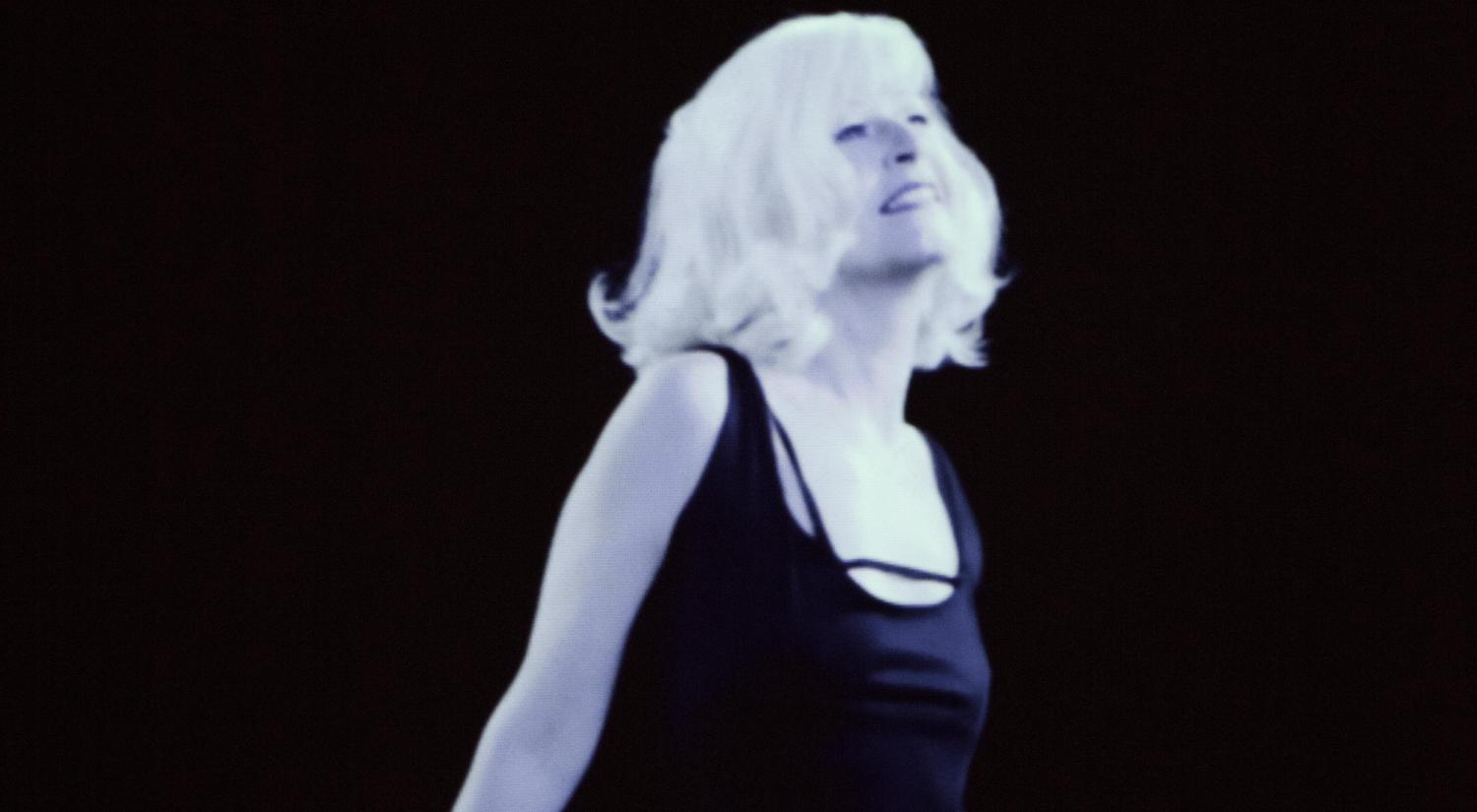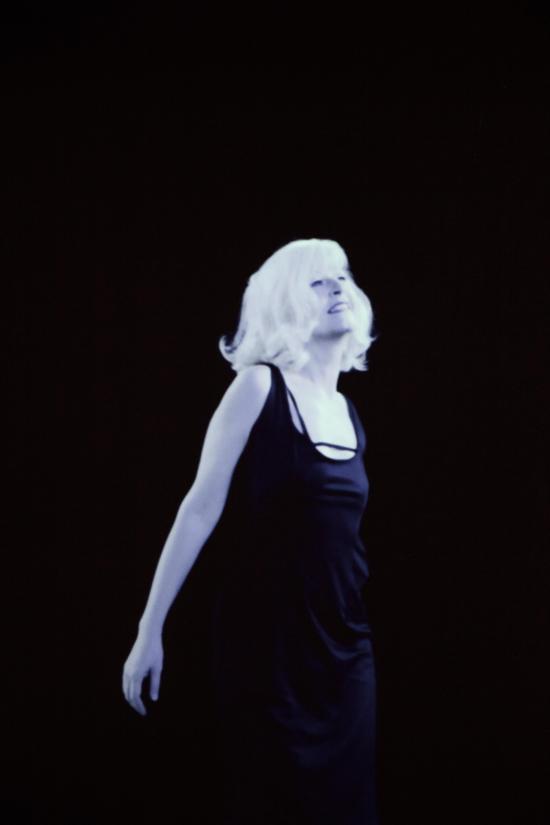The installation is a black-and-white film projection on a 2 x 3-metre Plexiglas sheet suspended in the middle of a room. The video is based on a scene from the film The Misfits (1961) where Marilyn Monroe dances alone. In the installation, Gonzalez-Foerster plays the part of Monroe. The Misfits was Monroe’s last film before her death in 1962.
With the installation Gonzalez-Foerster depicts the American dream as shattered. The video tells a story about a celebrated film icon and a woman who suffered a tragic fate.
The artist’s personal fascination
In The Misfits the dance scene shows the film’s main protagonist, Roslyn (played by Monroe), dancing alone, tipsy, in a dark desert landscape, unaware that Gay (played by Clark Gable) and his friends are watching from a patio. The projection of the dance scene on the transparent surface in Cinema (QM.15) and the accompanying sound, which has an ominous tone with slightly incongruous elements of happy jazz, adds to the fragile and delicate expression of the dance scene.
Video is Gonzalez-Foerster’s principal medium. She often takes a performative approach to the archetypal female identity that is constructed and perpetuated, in part, by Hollywood films. The artist’s works often fuse private and sensitive aspects with elements of gender theory and popular culture.
Iconic female characters
Cinema (QM.15) is part of the series QM.15, which consists of three works where Gonzalez-Foerster references iconic women in film, theatre and music. The works centre on tragic female characters who have sacrificed everything for art. In Gonzalez-Foerster’s words:
‘They can’t stop, and art is their vehicle; their very lives must become works of art, no matter the cost. The supreme excitement is the artistic experience.’
The title, QM.15, is an abbreviation of Sarah Bernhardt’s famous motto ‘quand même’, meaning ‘nevertheless’ or ‘anyway’. This may be understood as a reference to the high personal price artists pay for the sake of the artistic endeavour. Sarah Bernhardt is the protagonist in the Teatro installation, while Opera revolves around Maria Callas.
About Dominique Gonzalez-Foerster
Dominique Gonzalez-Foerster (b. 1965) was born in France and works with video, photography, architecture and installations. ARoS has followed her work since 2002, when she transformed a public park in Kassel, Germany into a surreal South American park landscape with built-in escape routes. Subsequently, Gonzalez-Foerster has exhibited in a range of venues, including Tate Modern in London, the Guggenheim in New York and Centre Pompidou in Paris. With the acquisition of Cinema for ARoS’s collection, the artist now also has a presence in Denmark.




